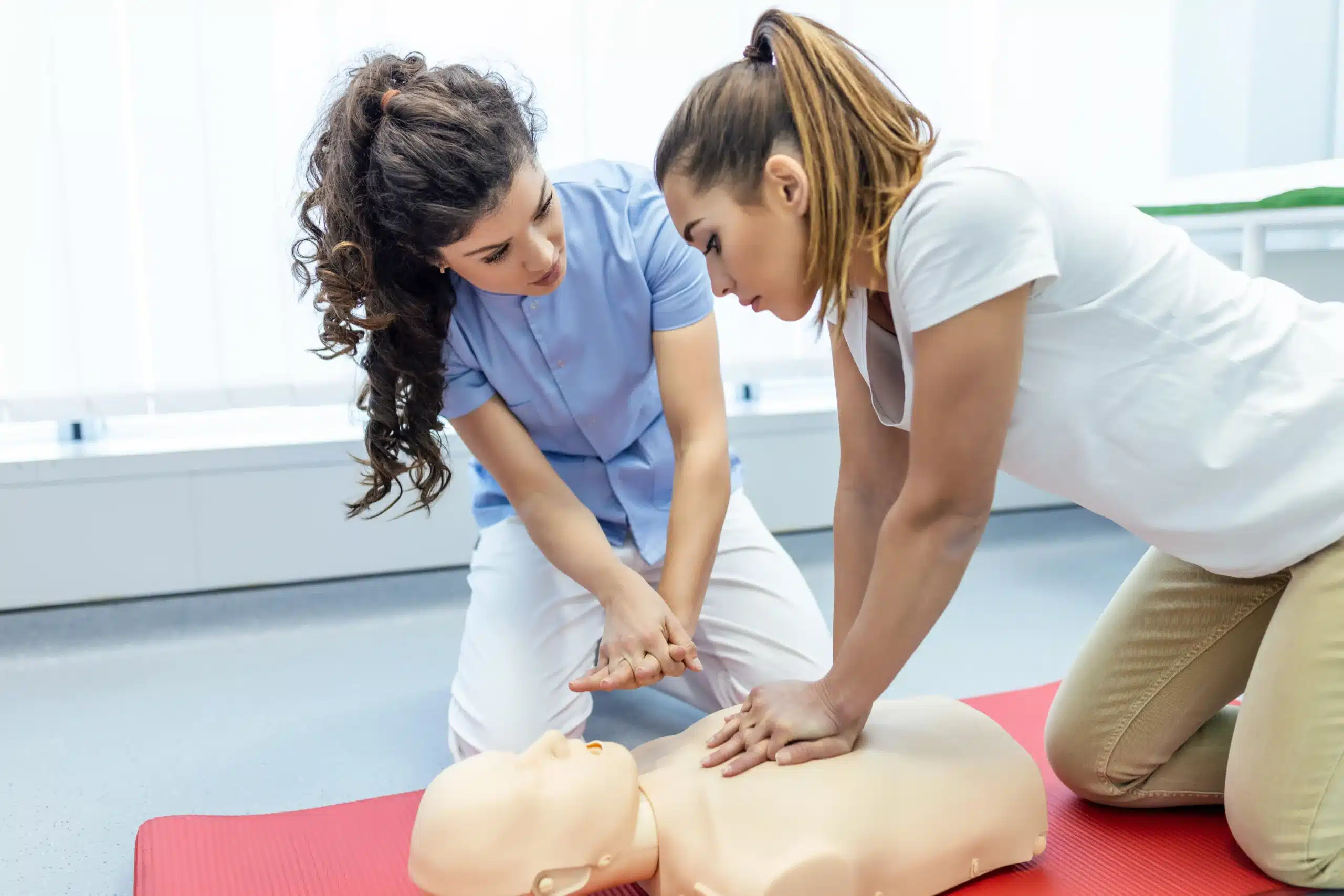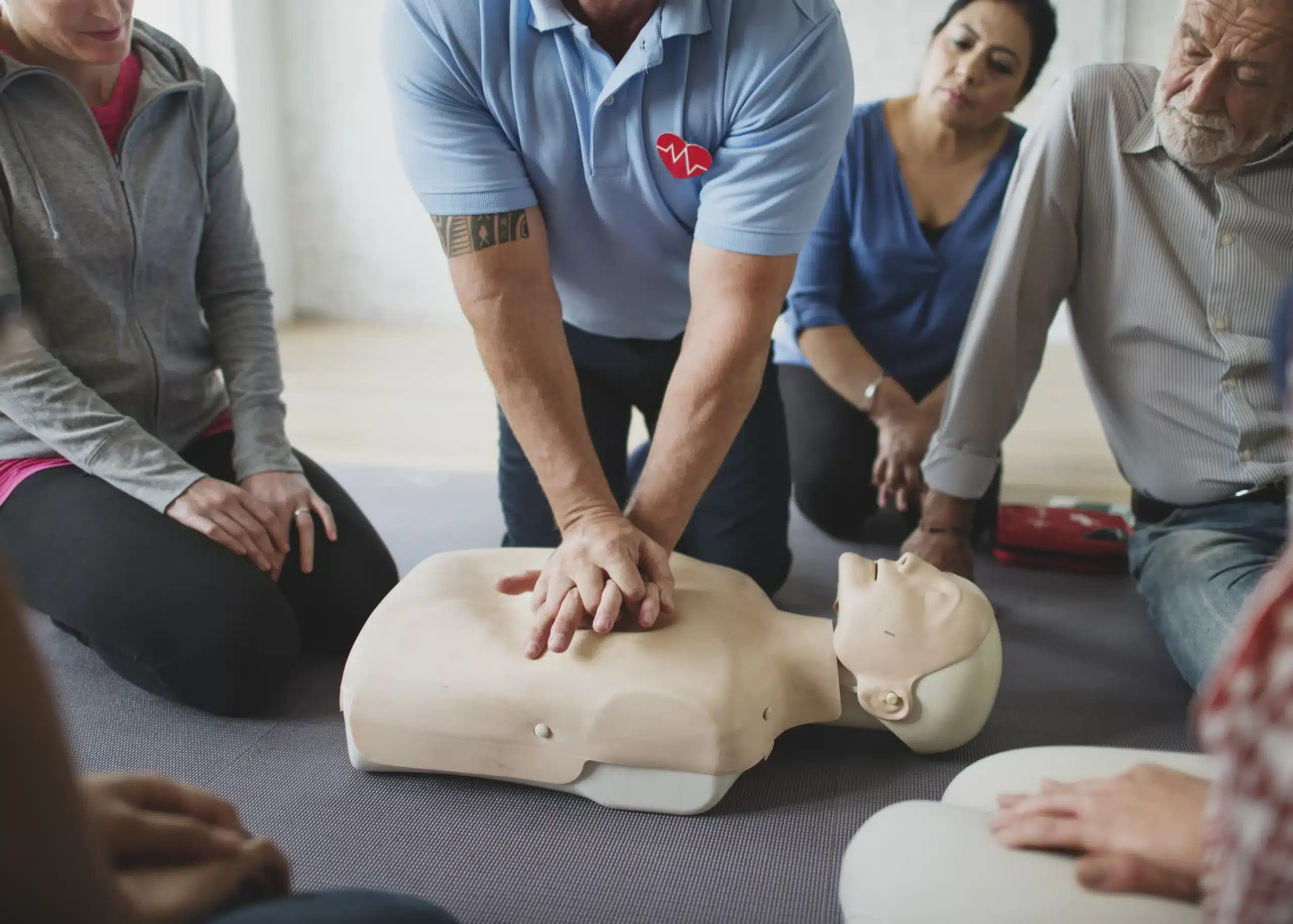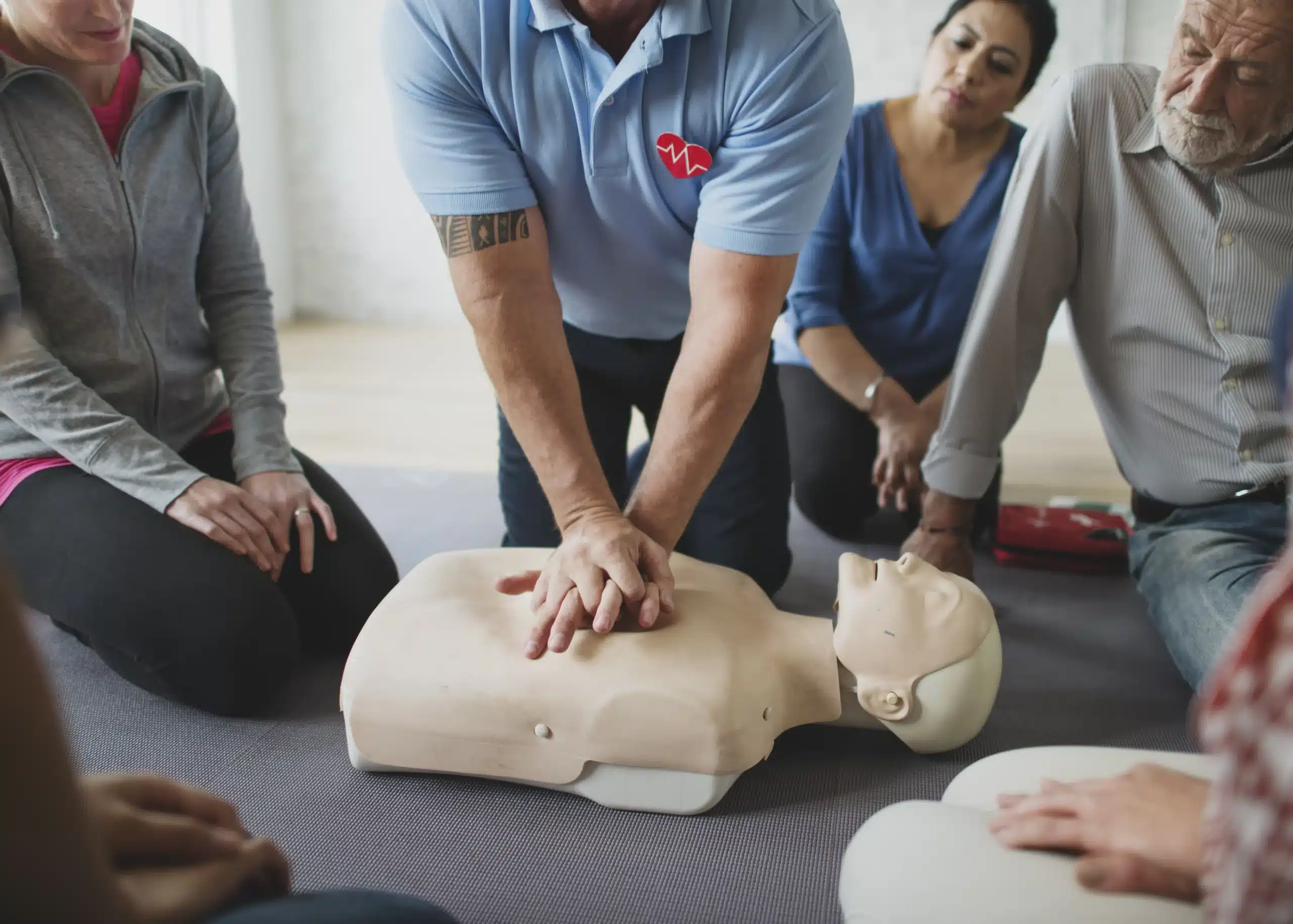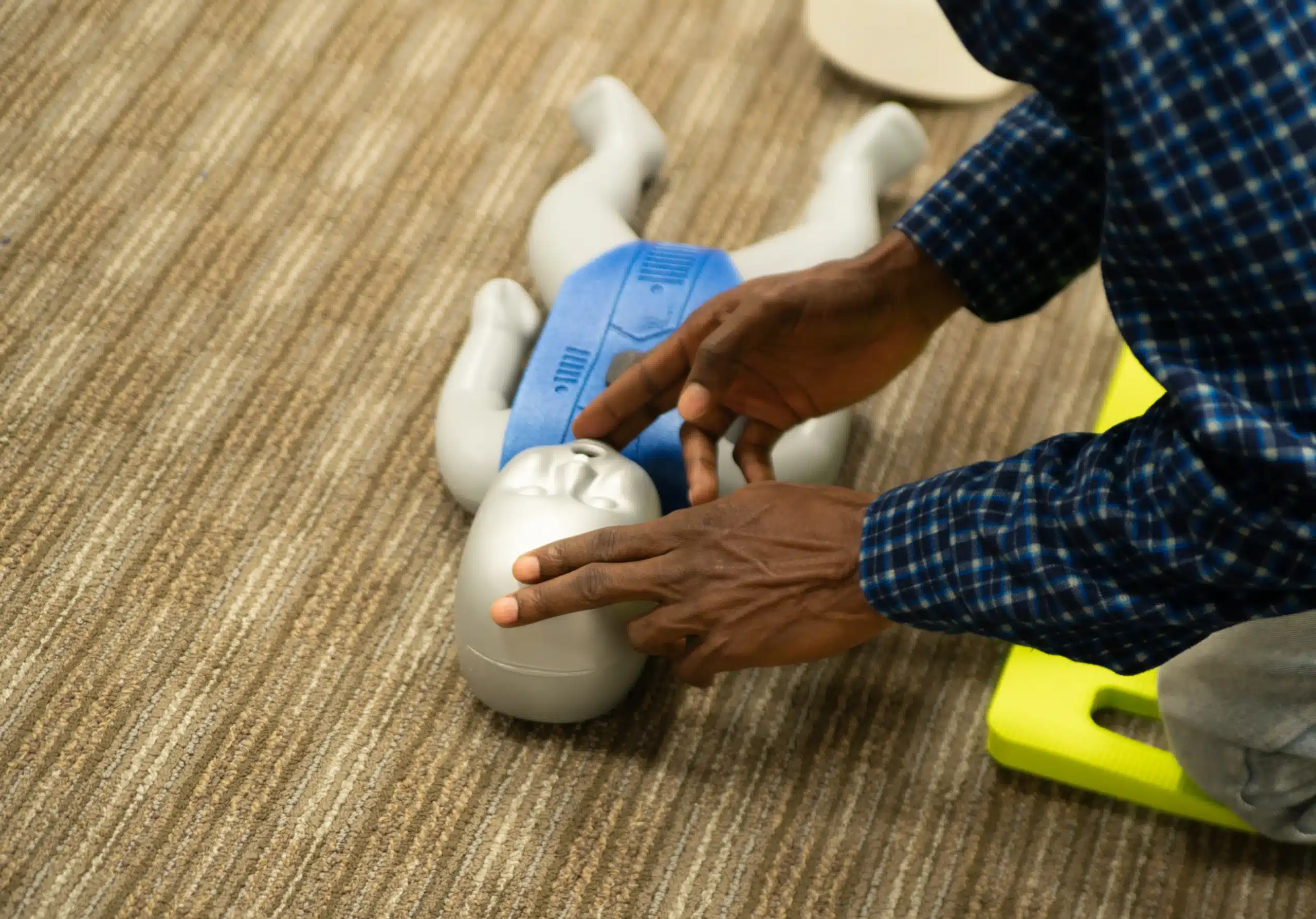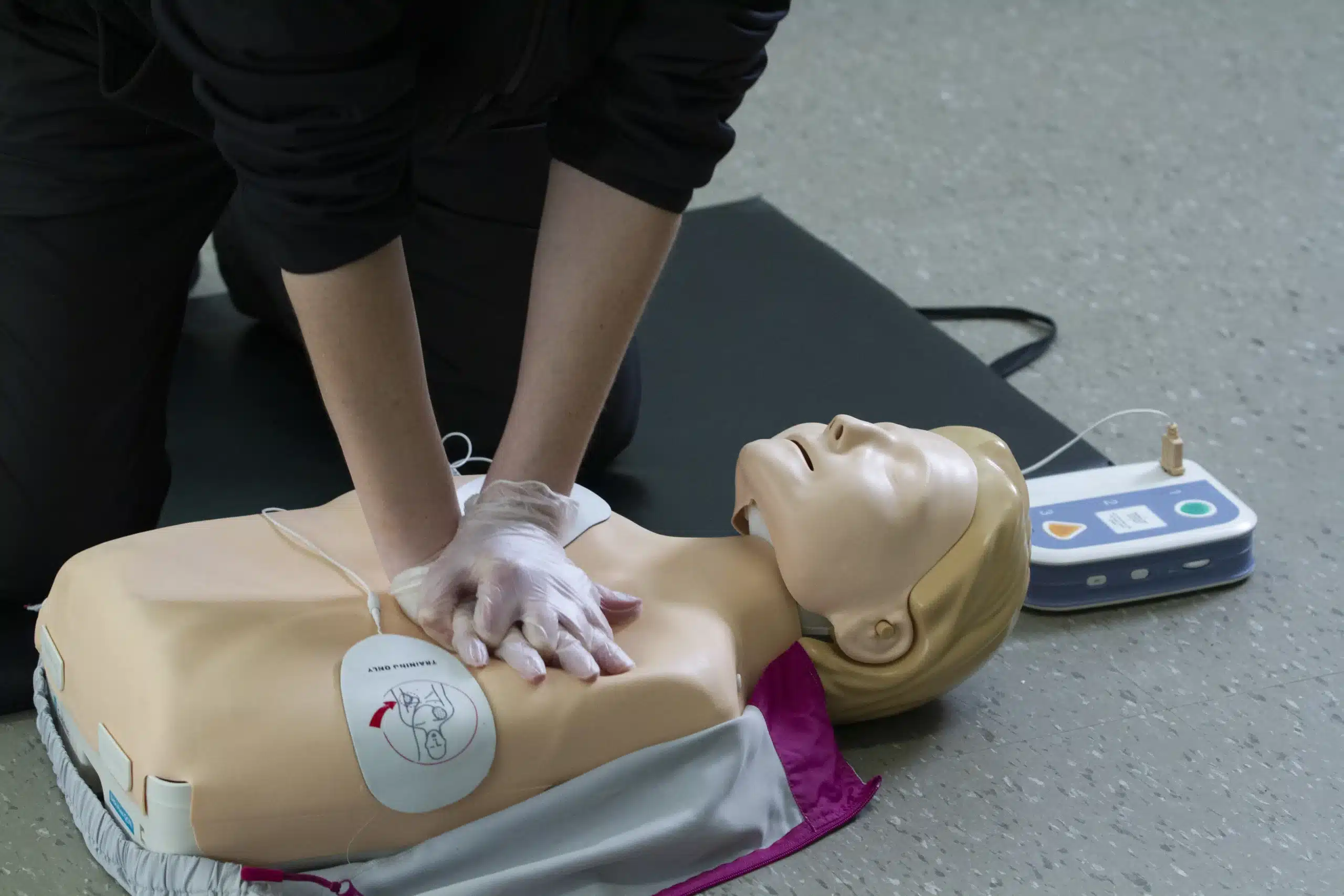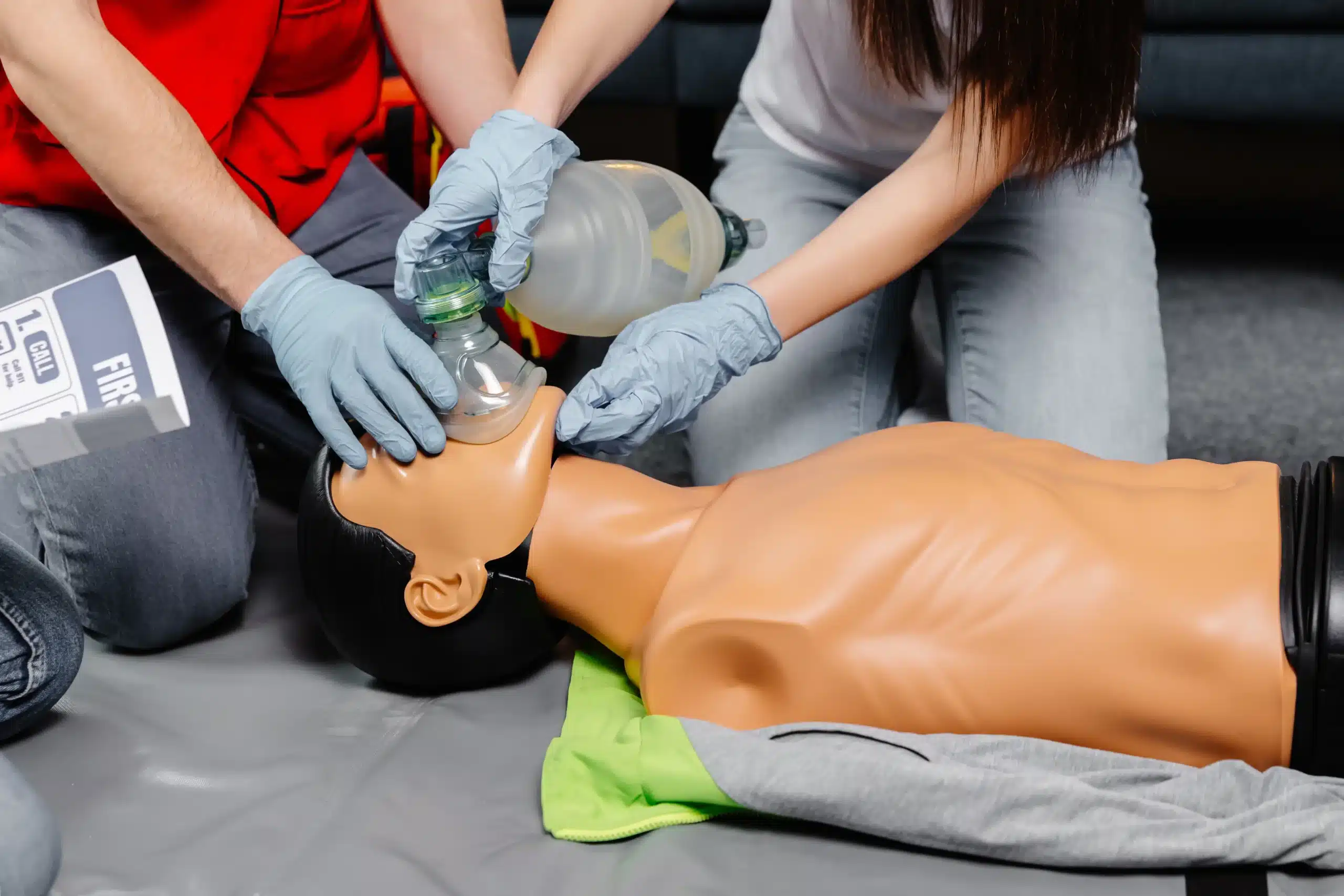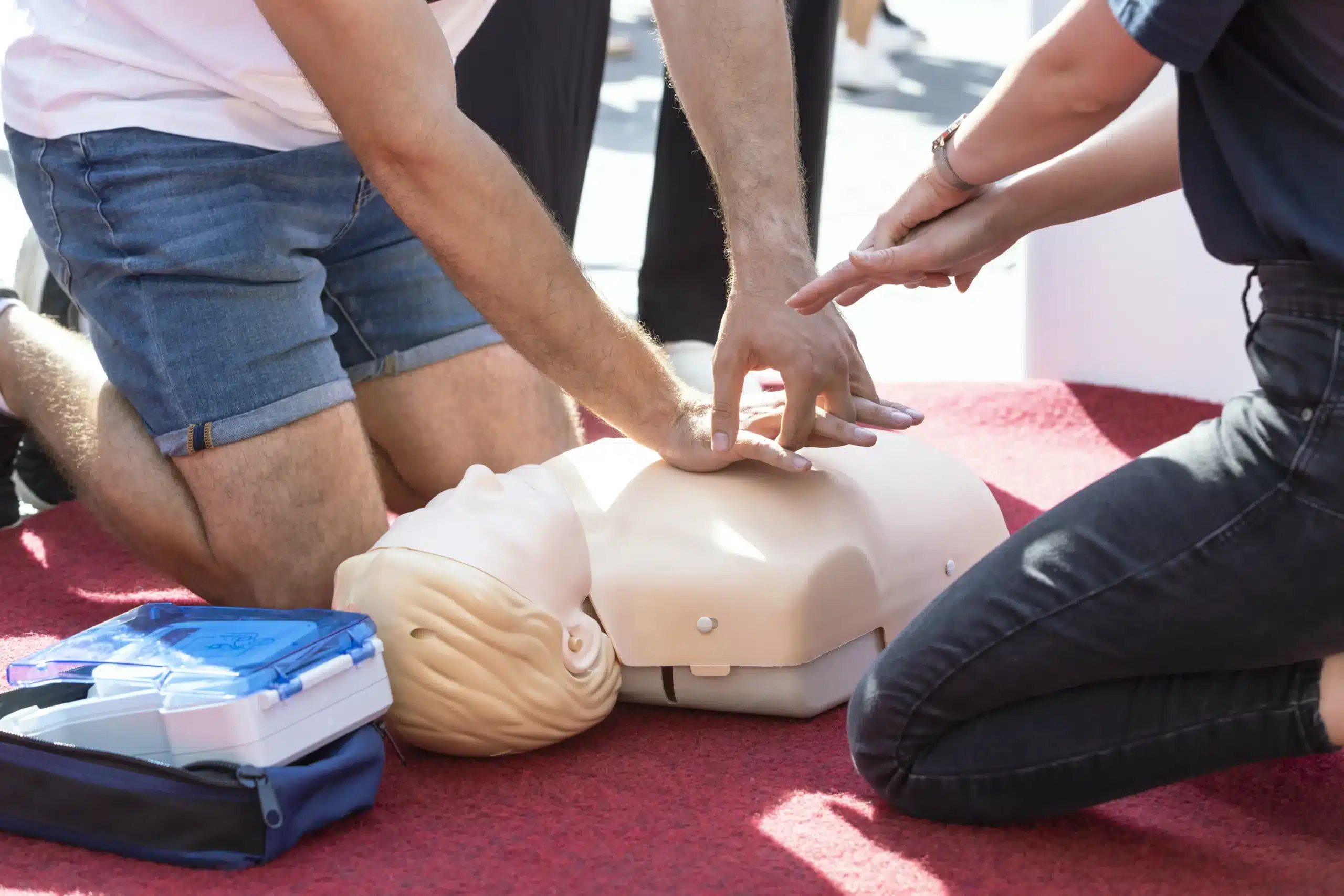Emergencies can happen anytime, anywhere. Would you know what to do if someone near you experienced a sudden cardiac arrest? Basic Life Support (BLS) training equips you with the skills and confidence to respond effectively in such critical situations. This guide will walk you through the essentials of BLS certification, including what it covers, why it’s important, and how to find the right training program for you in San Jose. Whether you’re a healthcare provider seeking certification or renewal, or an individual wanting to learn life-saving skills, understanding the nuances of basic life support in San Jose is crucial. We’ll cover everything from CPR techniques and AED use to managing airways and handling the stress of emergency situations.
Key Takeaways
- BLS certification provides essential life-saving skills: Equipping you to confidently respond to medical emergencies like heart attacks, strokes, and choking incidents. These skills are invaluable for healthcare professionals and anyone who wants to be prepared.
- Finding the right BLS course is key: Explore different learning formats (in-person, online, or hybrid) and choose a reputable provider that meets your needs and schedule. Consider factors like location, cost, and AHA-certification when making your decision.
- Stay current with the latest guidelines: Renew your BLS certification every two years to refresh your skills and ensure you’re up-to-date with the latest best practices in emergency care. This ongoing commitment demonstrates your dedication to providing high-quality care.
What is Basic Life Support (BLS)?
Basic Life Support (BLS) is a critical level of medical care used in emergencies like heart attacks, strokes, drownings, and other life-threatening situations. It goes beyond the basics of CPR to equip healthcare providers and first responders with the skills to assess a patient, perform CPR, provide ventilation, and manage airways. Think of it as the foundation for saving lives in those crucial first few minutes.
Key BLS Components
BLS certification covers a range of life-saving techniques. You’ll learn how to perform high-quality CPR for adults, children, and infants, including how to use an AED (automated external defibrillator). BLS also teaches you how to recognize and respond to someone who is choking and how to provide basic airway management. Strong emphasis is placed on teamwork, communication, and remaining calm under pressure—all essential for effective emergency response. For a deeper dive into BLS skills, check out our BLS Certification course.
Why BLS Matters
BLS is vital for anyone working in healthcare, from doctors and nurses to EMTs and paramedics. It’s also a valuable asset for other professionals like lifeguards, teachers, and coaches. Having BLS training means you’re prepared to step in and provide immediate care during a medical crisis, potentially making all the difference before more advanced help arrives. This training not only equips you with practical skills but also empowers you to confidently handle emergencies. Consider our group discounts if you’re looking for training options for your team. If you’re in the San Jose area, finding a BLS course is easy.
Common BLS Misconceptions
One common myth is that BLS certification is only for medical professionals. While it’s certainly a requirement for many healthcare roles, anyone can benefit from having these skills. Another misconception is that BLS training takes a lot of time. In reality, courses are designed to be efficient and manageable, fitting around busy schedules. Some even worry that online BLS certification isn’t as credible as in-person training. Rest assured, many reputable organizations offer high-quality online BLS courses that meet the same standards as traditional classroom learning. Finally, remember that BLS certification isn’t a one-time thing; it requires renewal to ensure your skills stay sharp and up-to-date with the latest guidelines. For more information on our affordable options, see our Low Price Guarantee.
Find Top BLS Certification Providers in San Jose
Finding the right BLS certification provider is key to a positive and effective learning experience. Here are a few reputable options to explore in San Jose:
Campbell CPR Classes
Campbell CPR Classes offers a wide range of American Heart Association (AHA) certified courses, including BLS, ACLS, PALS, and First Aid. They’re known for their flexible scheduling, competitive pricing, and commitment to excellent customer service. They also offer group discounts, making them a great choice for organizations or groups of friends certifying together. Campbell CPR Classes serves San Jose, Campbell, and Cupertino. Check out their BLS course for more information.
American Red Cross
The American Red Cross is a well-established provider of BLS certification and renewal training in San Jose. Their BLS course covers essential life-saving skills such as CPR, AED use, and clearing obstructed airways for adults, children, and infants.
CPR Training Center
The CPR Training Center in San Jose provides AHA-certified courses in various disciplines, including BLS. They focus on convenient scheduling and offer a low-price guarantee, making their training accessible and affordable.
Other Local Options
Beyond these providers, you can find other reputable options for BLS certification in and around San Jose. Look into training centers certified by the AHA, such as Fremont CPR Classes, or explore additional Red Cross offerings in nearby locations. Expanding your search can help you find the perfect course format, schedule, and price that works for you.
Choose Your BLS Course Format and Duration
Finding the right BLS course often comes down to choosing the format and learning environment that best suits your needs. Let’s break down the most common options: in-person, online, and hybrid courses.
In-Person Classes
In-person BLS classes offer a hands-on learning experience, perfect for those who thrive in interactive settings. You’ll work directly with a certified instructor, practice skills on mannequins, and get real-time feedback. These classes emphasize practical application and allow you to ask questions and learn from your peers. In-person training often follows a structured curriculum, ensuring you cover all the essential BLS components. The Red Cross offers in-person BLS training in San Jose, providing a convenient option for local residents.
Online Courses
If you need more flexibility, an online BLS course might be a better fit. Online learning allows you to study at your own pace, fitting the training around your schedule. You can review materials as needed and complete the coursework whenever and wherever it’s convenient. Avive AED notes that various providers offer online BLS certification, giving you plenty of choices. This format is ideal for those juggling work, family, or other commitments.
Hybrid Options
Hybrid courses combine the best of both worlds. You’ll typically complete the theoretical portion online, learning the fundamentals at your own speed. Then, you’ll attend a shorter, in-person skills session to practice what you’ve learned and demonstrate proficiency to an instructor. The American Heart Association offers this blended learning approach, providing a balanced and versatile option. Hybrid courses are a great choice for those who want the convenience of online learning with the hands-on practice of in-person instruction.
Typical Course Length and Flexibility
One of the biggest advantages of BLS certification is the relatively short time commitment. Initial BLS courses often take less than three hours to complete, according to Avive AED. Your BLS certification is valid for two years, as confirmed by the Red Cross, giving you ample time to utilize your skills and plan for renewal. This makes BLS certification a manageable and valuable investment in your professional and personal development.
Learn Essential BLS Skills
BLS certification equips you with crucial life-saving skills applicable in various medical emergencies. From CPR and AED use to effective airway management, BLS training gives you the confidence to respond effectively. Let’s break down these essential skills:
Adult, Child, and Infant CPR
CPR, or cardiopulmonary resuscitation, is the cornerstone of BLS. You’ll learn the proper techniques for performing CPR on adults, children, and infants, understanding the crucial differences in chest compression depth and rate for each age group. This hands-on training ensures you can deliver life-saving interventions until professional medical help arrives. For a helpful overview of these essential CPR skills, take a look at this guide on BLS Certification.
AED Use and Choking Response
BLS training also covers the effective use of an automated external defibrillator (AED). You’ll learn how to quickly assess a situation and use an AED to deliver a potentially life-saving shock to someone experiencing cardiac arrest. Additionally, BLS training addresses choking emergencies, teaching you how to perform the Heimlich maneuver and other techniques to clear obstructed airways in both conscious and unconscious individuals. This article on BLS training discusses how such training empowers healthcare professionals to handle these critical situations.
Teamwork and Communication in Emergencies
Effective teamwork and communication are paramount in medical emergencies, especially in healthcare settings. BLS training emphasizes the importance of clear communication and coordinated efforts among team members. You’ll learn how to work together seamlessly, ensuring that each person understands their role and can contribute effectively to delivering life-saving care. For more on the importance of teamwork in BLS, review this resource.
Handling High-Stress Situations
Responding to a medical emergency can be incredibly stressful. BLS training not only teaches you the technical skills but also prepares you to manage the emotional and mental challenges of high-pressure situations. Through realistic scenarios and practice drills, you’ll develop the ability to remain calm, think clearly, and make informed decisions under pressure. Regular BLS renewal courses offer healthcare professionals the opportunity to refresh their skills and stay updated on the latest guidelines, further enhancing their ability to handle stressful emergency situations.
Understand BLS Certification Costs & Value
Getting BLS certified is an investment in your skills and ability to respond to emergencies. Understanding the associated costs, and the long-term value it provides, will help you make informed decisions about your training.
Average Prices and Inclusions
BLS certification courses typically include training in CPR, AED use, and airway management techniques, equipping you to handle various medical emergencies. Prices can vary based on location, course format (in-person, online, or blended), and the training provider. Expect to find BLS courses in the San Jose area ranging from $75 to $150. Be sure to check what’s included in the course fee, such as study materials, a certification card, and any additional resources. For example, you can explore BLS course options at Campbell CPR Classes to get a better sense of pricing and what’s included.
Group Discounts and Offers
If you’re getting certified with a group, like your coworkers or a community organization, ask about group discounts. Many training centers, including Campbell CPR Classes, offer reduced rates for groups of five or more. This can be a cost-effective way to train your entire team. Some providers also offer discounts for students, military personnel, or first responders, so it’s always worth inquiring about potential cost savings.
Campbell CPR Classes’ Low Price Guarantee
Campbell CPR Classes is committed to providing high-quality BLS training at competitive prices. They offer a Low Price Guarantee, ensuring you receive the best possible value. Serving San Jose, Campbell, and Cupertino, their focus on affordability makes BLS certification accessible to a wider audience. If you find a lower advertised price for a comparable BLS course in the area, they will match it. This commitment, combined with their excellent customer service, makes them a top choice for BLS certification. You can always contact them with any questions about their pricing or courses.
Long-Term BLS Benefits
The value of BLS certification extends far beyond the initial course cost. This training provides essential skills that can make a real difference in emergencies. Whether you work in healthcare or want to be prepared for unexpected events, having BLS certification gives you the confidence to respond effectively. These skills are valuable assets in both your professional and personal life. Maintaining current BLS certification can also enhance your career prospects. Consider it an investment in your future, empowering you to provide crucial assistance when it matters most. BLS training remains essential for delivering efficient emergency care, whether through online courses or traditional classroom instruction.
Renew Your BLS Certification
Keeping your BLS certification current is essential for any healthcare provider or professional rescuer. It ensures you’re always prepared to provide effective, life-saving care. But how often do you need to renew, and what’s involved? Let’s break it down.
Certification Validity
BLS certification is typically valid for two years. After this period, you’ll need to renew your certification to maintain your credentials and stay up-to-date with the latest guidelines. Renewal often involves a shorter refresher course rather than a full BLS class, saving you valuable time.
Renewal Steps
Renewing your BLS certification is straightforward. You can find various BLS renewal courses offered by trusted providers like Campbell CPR Classes. Check their website or contact them to find a renewal course that fits your schedule and location. The process usually involves reviewing core BLS skills, updating your knowledge on current guidelines, and demonstrating competency in essential techniques. At Campbell CPR Classes, we make the process easy and convenient. Contact us today to learn more about our renewal courses.
Refresh Your Skills
BLS renewal courses offer a valuable opportunity to refresh your skills and stay sharp. These courses provide hands-on practice and review scenarios that mimic real-world emergencies, helping you maintain muscle memory and confidence in your abilities. They also cover any updates or changes to BLS guidelines, ensuring you’re providing the most effective care possible.
Stay Current with Guidelines
Staying current with the latest BLS guidelines is crucial for providing high-quality care. Regular refresher courses ensure your skills align with the most recent recommendations from organizations like the American Heart Association. This commitment to ongoing learning demonstrates your dedication to patient safety and best practices in emergency care. It also helps you adapt to evolving best practices and maintain the highest standards of care. Consider taking advantage of Campbell CPR Classes’s Low Price Guarantee when you choose your renewal course.
Select the Right BLS Course
Choosing the right BLS course is crucial for receiving high-quality training and gaining the confidence to apply your skills effectively. Consider these factors when making your decision:
Choosing a Provider
BLS certification equips you with essential life-saving skills, from CPR and AED use to airway management, enabling you to handle various medical emergencies. Finding a BLS course near you is easier than you think. Reputable providers like Campbell CPR Classes, the American Red Cross, and other AHA-certified training centers offer courses throughout San Jose and the surrounding areas. Look for providers with a strong track record, positive reviews, and experienced instructors. For those in or near Campbell, consider checking out Campbell CPR Classes’ BLS course options.
Matching Format to Learning Style
Everyone learns differently. Think about what works best for you and choose a course format that complements your learning style. In-person classes offer hands-on practice and direct interaction with instructors, while online courses provide flexibility for those with busy schedules. Some providers offer hybrid options, combining online learning with in-person skills sessions. Consider factors like your schedule, learning preferences, and comfort level with technology when selecting a format.
Evaluating Credentials
Ensure the provider you choose is accredited by a recognized organization like the American Heart Association (AHA). AHA-certified training centers adhere to specific standards and guidelines, ensuring the quality and consistency of their training programs. Campbell CPR Classes is a woman-owned, AHA-certified training center. Look for providers who emphasize high-quality training, experienced instructors, and up-to-date curriculum aligned with the latest AHA guidelines. They also offer a low price guarantee, ensuring you get the best value for your training. Check out their low price guarantee for more information.
Assessing Practical Skill Application
BLS training goes beyond just theory—it’s about developing the practical skills and confidence to respond effectively in real-life emergencies. Look for courses that offer ample opportunities for hands-on practice, including CPR on manikins, AED simulations, and airway management techniques. The ability to apply these skills confidently and competently is crucial, especially for healthcare personnel. Consider asking providers about their class sizes and student-to-instructor ratios to ensure you receive personalized attention and adequate practice time. Contact Campbell CPR Classes to learn more about their hands-on training approach. They offer various courses, including BLS, ACLS, PALS, CPR, and First Aid.
Get BLS Certified
Now that you understand the importance of BLS certification, let’s explore how you can get certified. This section breaks down the process into manageable steps, from enrolling in a course to applying your skills in real-world scenarios.
Enroll in a Course
Finding the right BLS course is the first step. Look for courses offered by reputable organizations like the American Red Cross or certified training centers like Campbell CPR Classes. Consider factors like location, schedule, and course format to find a class that fits your needs. We’re proud to serve San Jose, Campbell, and Cupertino. Check out our BLS course options to see what we offer at Campbell CPR Classes. We also offer discounted group rates for businesses and organizations.
What to Expect During Training
BLS training typically involves a combination of classroom instruction, demonstrations, and hands-on practice. You’ll learn essential skills like CPR for adults, children, and infants, how to use an AED, and how to relieve choking. Many courses offer various formats, from traditional in-person classes to blended learning options that combine online modules with in-person skills sessions. This blended learning format offers flexibility for busy schedules.
Prepare for Your Exam
Most BLS courses include a written exam and a practical skills test. The written exam typically covers the key concepts and procedures taught in the course. The practical skills test requires you to demonstrate your proficiency in CPR, AED use, and other BLS techniques. Don’t worry, the exam is often open-book, and your instructors will prepare you thoroughly during the training. Review the course materials and practice the skills regularly to build your confidence.
Apply BLS Skills in Real-World Scenarios
BLS certification equips you to respond effectively in various medical emergencies. From a cardiac arrest at a local park to a choking incident at a restaurant, your BLS skills can make a real difference. While we hope you never have to use them, knowing how to perform CPR, use an AED, and clear an obstructed airway can give you the confidence to act quickly and potentially save a life. BLS training empowers you to handle emergencies with competence and potentially improve outcomes in critical situations. Consider adding RQI training to further enhance your skills and stay up-to-date with the latest resuscitation guidelines. For any questions or concerns, feel free to contact us.
Related Articles
- Your Guide to BLS Classes in San Jose – Campbell CPR Classes
- BLS Certification in Cupertino: Your Complete Guide – Campbell CPR Classes
- BLS Courses San Jose: Your Complete Guide – Campbell CPR Classes
- BLS Renewal in San Jose: Find the Right Course – Campbell CPR Classes
- BLS for Healthcare Providers in Campbell – Campbell CPR Classes
Frequently Asked Questions
Is BLS certification only for healthcare professionals?
Not at all! While BLS is definitely a must-have for many healthcare jobs, anyone can learn these valuable skills. From teachers and coaches to parents and grandparents, BLS training empowers you to respond to emergencies and potentially save a life.
How long does it take to get BLS certified?
BLS courses are designed to be pretty efficient, often taking less than a day to complete. There are several different learning formats available, including in-person, online, and hybrid courses, so you can choose what works best with your schedule.
What’s the difference between BLS and CPR?
CPR is actually a core part of BLS. BLS builds on basic CPR, adding essential skills like using an AED, managing airways, and working effectively as a team during emergencies. Think of BLS as a more comprehensive approach to life-saving care.
How much does BLS certification cost?
The cost of BLS certification can vary depending on where you live and who you train with. It’s always a good idea to compare prices and see what’s included in the course fee. Some training centers, like Campbell CPR Classes, offer a low-price guarantee and group discounts, so be sure to ask about those options.
How often do I need to renew my BLS certification?
BLS certification is typically valid for two years. Renewal usually involves a shorter refresher course to keep your skills sharp and ensure you’re up-to-date with the latest guidelines. It’s a small investment to maintain such a critical skillset.


